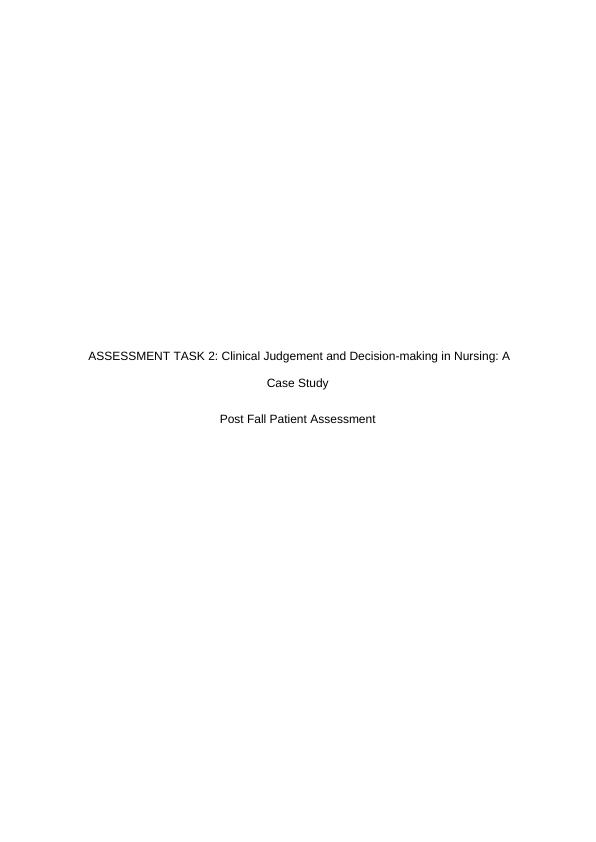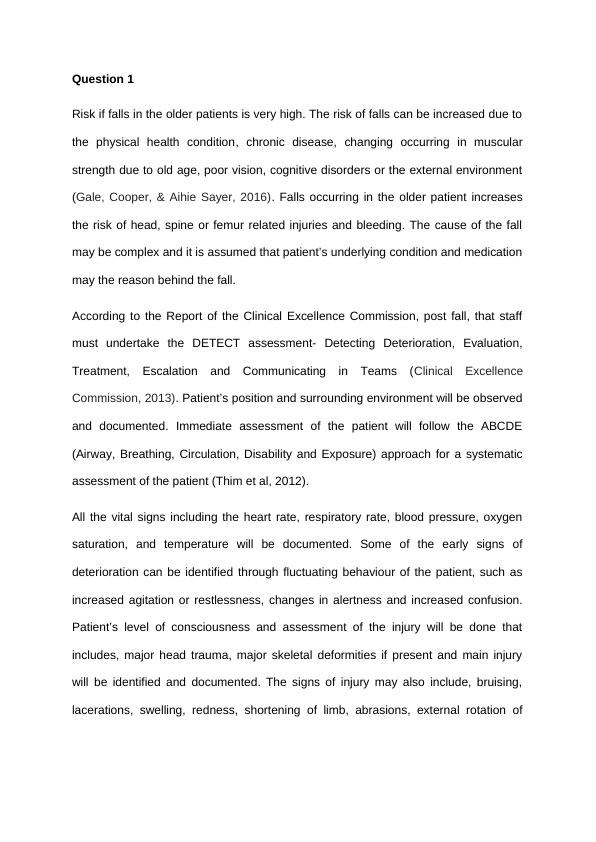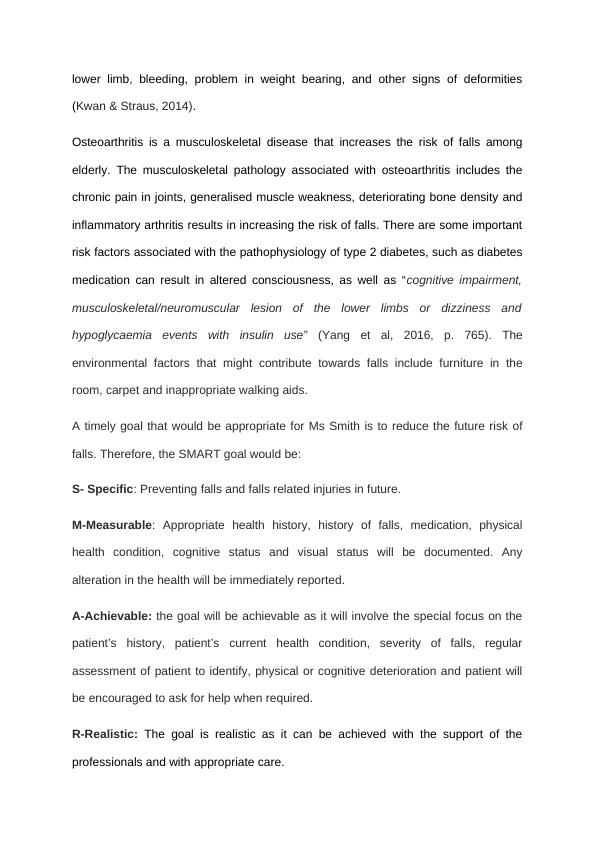Clinical Judgement and Decision-making in Nursing: A Case Study - Post Fall Patient Assessment
Added on 2023-04-11
6 Pages1085 Words485 Views
End of preview
Want to access all the pages? Upload your documents or become a member.
Pathophysiology of Chronic Health Problems and Management Strategies
|6
|1102
|172
Case Study: Wound Assessment and Evidence-Based Wound Management Plan
|15
|5055
|177
Pelvic Injury: Assessment, Diagnosis, and Treatment
|8
|517
|460
Clinical Reasoning Cycle for Mr Cyril Smith's Case
|4
|1745
|28
Clinical Case Study on Total Knee Replacement
|6
|1647
|191
Case Study 2: Pathophysiological Changes, Walking Frame, Incontinence, and Interdisciplinary Team
|5
|892
|269



